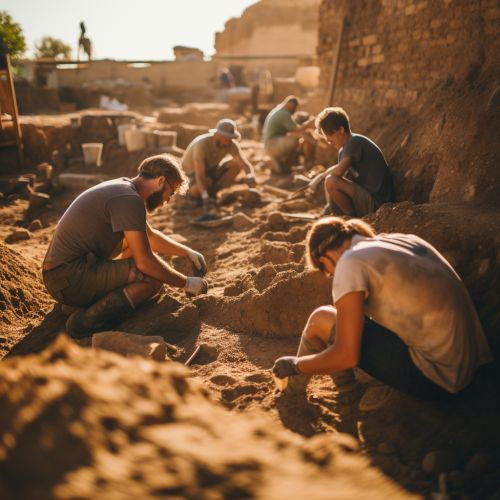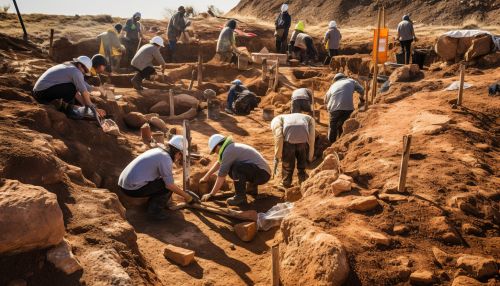Excavation (archaeology)
Introduction
Excavation in archaeology is the process of finding and recovering artifacts from the past. This is done by carefully removing soil and other materials from a site, allowing archaeologists to study the objects and structures that have been buried over time. Excavation is a crucial part of archaeological research, as it provides the primary source of data about the human past.
History of Excavation
The practice of excavation in archaeology has a long history, dating back to antiquity. Early excavations were often conducted by treasure hunters and looters, who had little regard for the scientific value of the sites they were destroying. The modern discipline of archaeology, with its emphasis on careful excavation and recording, began to develop in the 19th century.


Methods of Excavation
There are several methods of excavation used in archaeology, each suited to different types of sites and research questions. These include:
- Stratigraphic excavation: This is the most common method of excavation, based on the principle of stratigraphy. It involves excavating a site layer by layer, with each layer representing a distinct period of occupation.
- Horizontal excavation: This method is used when the goal is to uncover the horizontal extent of a site, such as a settlement. It is often used in conjunction with stratigraphic excavation.
- Vertical excavation: This method is used when the goal is to understand the depth and sequence of a site's occupation. It is often used in deep sites, such as caves or natural deposits.
Excavation Techniques
There are a variety of techniques used in archaeological excavation, depending on the nature of the site and the research questions being asked. These include:
- Troweling: This is the most common technique used in archaeological excavation. It involves the use of a small, flat tool to carefully remove soil and reveal artifacts.
- Shoveling: This technique is used to remove large amounts of soil quickly. It is often used in the initial stages of an excavation, when the goal is to reach the archaeological layers as quickly as possible.
- Screening: This technique involves passing excavated soil through a mesh screen to recover small artifacts that might otherwise be missed.
- Flotation: This technique is used to recover tiny artifacts and organic remains, such as seeds and animal bones. It involves placing soil in water and allowing the lighter materials to float to the surface.
Excavation Equipment
Archaeologists use a variety of tools and equipment during an excavation. These include:
- Trowels: These are small, flat tools used for carefully removing soil and revealing artifacts.
- Shovels: These are used for quickly removing large amounts of soil.
- Screens: These are used to sift through soil and recover small artifacts.
- Buckets: These are used to carry soil and other materials.
- Brushes: These are used to clean artifacts and delicate features.
- Measuring tapes and plumb bobs: These are used to measure the depth and alignment of excavation units.
Recording and Analysis
Once artifacts and other materials have been excavated, they must be carefully recorded and analyzed. This involves:
- Drawing: Archaeologists make detailed drawings of the site and the features they uncover. These drawings provide a permanent record of the site and can be used for further analysis.
- Photography: Photographs are taken throughout the excavation to document the process and the finds.
- Cataloging: All artifacts and other finds are carefully catalogued. This involves recording their location, description, and any other relevant information.
- Analysis: Once the excavation is complete, the artifacts and other finds are analyzed to learn more about the people who made and used them.
Ethics and Conservation
Excavation is a destructive process, and once a site has been excavated, it cannot be restored. Therefore, archaeologists must follow strict ethical guidelines to ensure that the information gained from excavation is worth the destruction of the site. These guidelines include:
- Conservation: Archaeologists must take steps to conserve the artifacts they uncover and the site itself.
- Stewardship: Archaeologists have a responsibility to protect archaeological sites for future generations.
- Collaboration: Archaeologists should work with local communities and other stakeholders to ensure that their work is respectful and beneficial.
Conclusion
Excavation is a vital part of archaeological research, providing a window into the past that cannot be gained through any other means. Through careful excavation and analysis, archaeologists can uncover the stories of past peoples and cultures, helping us to understand our shared human history.
